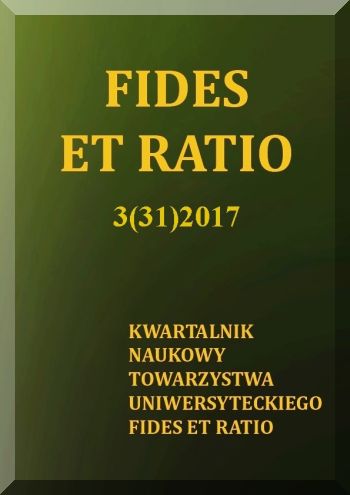Abstract
The circular arrangement of values is empirically supported by many studies worldwide, involving adult respondents but also children (Cieciuch, 2013; Cieciuch et al., 2010; Döring i in., 2015). One of the most influential method to assess children’s values through self-report and taking into account children’s developmental background, is proposal of Picture-Based Value Survey for Children (PBVS-C) developed by Döring (Döring et al., 2010). Despite evidence on the circular structure at an early stage, there remains an open question: Do pictorial items mean for children the same as within the framework of assumptions of authors of the PBVS-C self-report method?
This study is an attempt to get closer to the answer to that question. The study involved 20 children aged 7 to 8 years. The procedure included two phases. Firstly, the PBVS-C questionnaire in the polish adaptation (Cieciuch, Harasimczuk i Döring, 2010) was used to measure children’s values. In the second phase, each child was individually interviewed. The purpose of the second phase was to discover the reasons of children’s choices of values in PBVS-C. Hypotheses about circular structure of values were tested using multidimensional scaling. Analysis presents the structure which closely corresponded with circle. Analyses of MDS results revealed that values were arranged in circular structure and the configuration could be divided into four higher-order values, based on two bipolar dimensions. In the first dimension self-transcendence opposes self–enhancement. In the other dimension, openness to change opposes conservation.
The findings show predominance of arguments belonging to categories which were consistent with the meaning of values within the theoretical model of Schwartz and collaborators (2012) and were in congruence with the operationalization in PBVS-C. The percentage of statements assessed as consistent appeared to be 81%.
References
Bilsky W., Niemann F., Schmitz J., Rose I. (2005). Value structure at an early age: Cross-cultural replications, w: W. Bilsky, D. Elizur (red.), Facet Theory: Design, analysis and applications. Proceedings of the 10th International Facet Theory Conference in Rome, 10-13 July 2005 (s. 241–248). Praga: Agentura Action M.
Boeije, H., Willis, G. (2013). The Cognitive Interviewing Reporting Framework (CIRF): Towards the harmonization of cognitive testing reports. Methodology: European Journal of Research Methods for the Behavioral and Social Sciences, 9(3), 87-95.
Bubeck, M., Bilsky, W. (2004). Value structures at an early age. Swiss Journal of Psychology, 63(1), 31-41.
Buers, C., Triemstra, M., Bloemendal, E., Zwijnenberg, N.C., Hendriks, M., Delnoij, D. M.J. (2014). The value of cognitive interviewing for optimizing a patient experience survey. International Journal of Social Research Methodology, 17,(4), 325–34.
Cieciuch, J. (2013). Kształtowanie się systemu wartości od dzieciństwa do wczesnej dorosłości. Warszawa: Liberi Libri.
Cieciuch, J., Döring, A. K, Harasimczuk, J. (2013). Measuring Schwartz’s values in childhood: Multidimensional scaling across instruments and cultures. European Journal of Developmental Psychology, 10(5), 625-633.
Cieciuch, J., Harasimczuk, J., Döring, A. K. (2013). Validity of the Polish adaptation of the Picture-Based Value Survey for Children. Journal of Psychoeducational Assessment, 31(4), 404-409.
Cieciuch, J., Harasimczuk, J., Döring, A. K. (2010). Struktura wartości w późnym dzieciństwie. Psychologia Rozwojowa, 15(2), 33-45.
Cieciuch, J., Davidov, E., Algesheimer, R. (2016). The stability and change of value structure and priorities in childhood: A longitudinal study. Social Development, 25(3), 503-527.
Cieciuch, J., Schwartz, S. H., Davidov, E. (2015). The social psychology of values. W: J. D. Wright (red.), International encyclopedia of social and behavioral sciences, edition: second edition, chapter: Social psychology of values, Publisher: Elsevier, (s.41-46).
Cieciuch, J., Zaleski, Z. (2011). Polska adaptacja Portretowego Kwestionariusza Wartości Shaloma Schwartza. Czasopismo Psychologiczne, 17(2), 251-262.
Davidov, E., Schmidt, P., Schwartz, S. H. (2008). Bringing values back in. The adequacy of the European Social Survey to measure values in 20 countries. Public Opinion Quarterly, 72(3), 420-445.
Döring, A. K. (2008) . Assessment of children’s values: The development of a picture-based instrument. Münster: Westfälische Wilhelms-Universität.
Döring, A. K. (2010). Assessing children’s values: An exploratory study. Journal of Psychoeducational Assessment, 28(6), 564-577.
Döring, A. K., Blauensteiner, A., Aryus, K., Drögekamp, L., Bilsky, W. (2010). Assessing values at an early age: The Picture-Based Value Survey for Children. Journal of Personality Assessment, 92(5), 439-448.
Döring A. K., Schwartz, S.H., Cieciuch, J., Groenen, P. J. F., Glatzel, V., Harasimczuk, J., Janowicz, N., Nyagolova, M., Scheefer, E. R., Allritz, M., Milfont, T.L., Bilsky, W. (2015). Cross‐cultural evidence of value structures and priorities in childhood. British Journal of Psychology, 106(4), 675-699.
Foddy, W. (1996). The in-depth testing of survey questions: A critical appraisal of methods. Quality and Quantity, 30(4), 361-370.
Latcheva, R. (2011). Cognitive interviewing and factor-analytic techniques:
a mixed method approach to validity of survey items
measuring national identity. Quality and Quantity, 45, 1175–1199.
Piaget, J. (1996). The psychology of intelligence. Patterson, NJ: Littlefield, Adams.
Presser, S., Couper, M. P., Lessler, J., Martin., E., Martin, J., Rothgeb, J. M., Singer, E. (2004). Methods for testing and evaluating survey questions. Public Opinion Quarterly, 68(1), 109-130.
Schwartz, S.H. ( 1992). Universals in the content and structure of values: Theoretical Advances and empirical tests in 20 countries, w: M. P. Zanna (red.), Advances in experimental social psychology, t. 25 (s.1-65). London: Academic Press.
Schwartz, S. H. (2010). Basic values: How they motivate and inhibit prosocial behavior, w: M. Mikulincer, P. Shaver (red.), Prosocial motives, emotions, and behavior: The better angels of our nature (s.221-241). Washington: American Psychological Association Press.
Schwartz, S. H., Cieciuch, J., Vecchione, M., Davidov, E., Fischer, R., Beierlein, C., Ramos, A., Verkasalo, M., Lönnqvist, J.-E., Demirutku, K., Dirilen-Gumus, O., Konty, M. (2012). Refining the theory of basic individual values. Journal of Personality and Social Psychology, 103(4), 663-688.
Willis, G. B. (2015). Research synthesis: The practice of cross-cultural cognitive interviewing. Public Opinion Quarterly, 79, Special Issue, (s.359-395).
